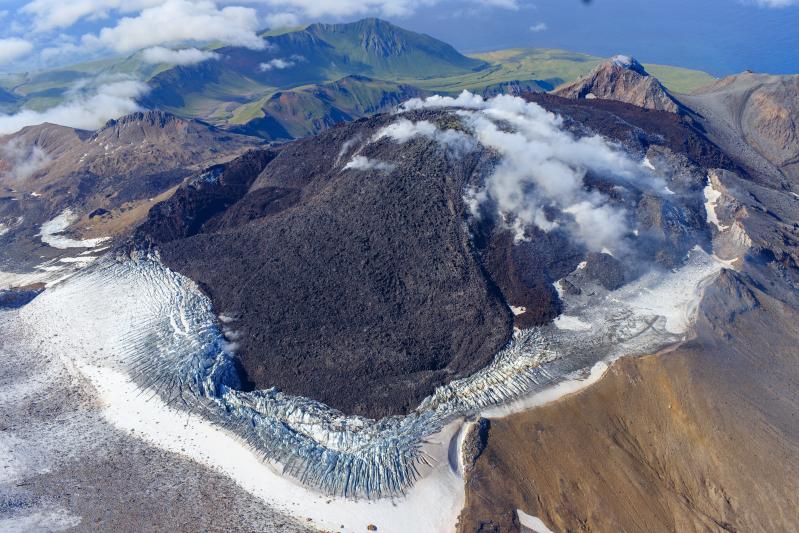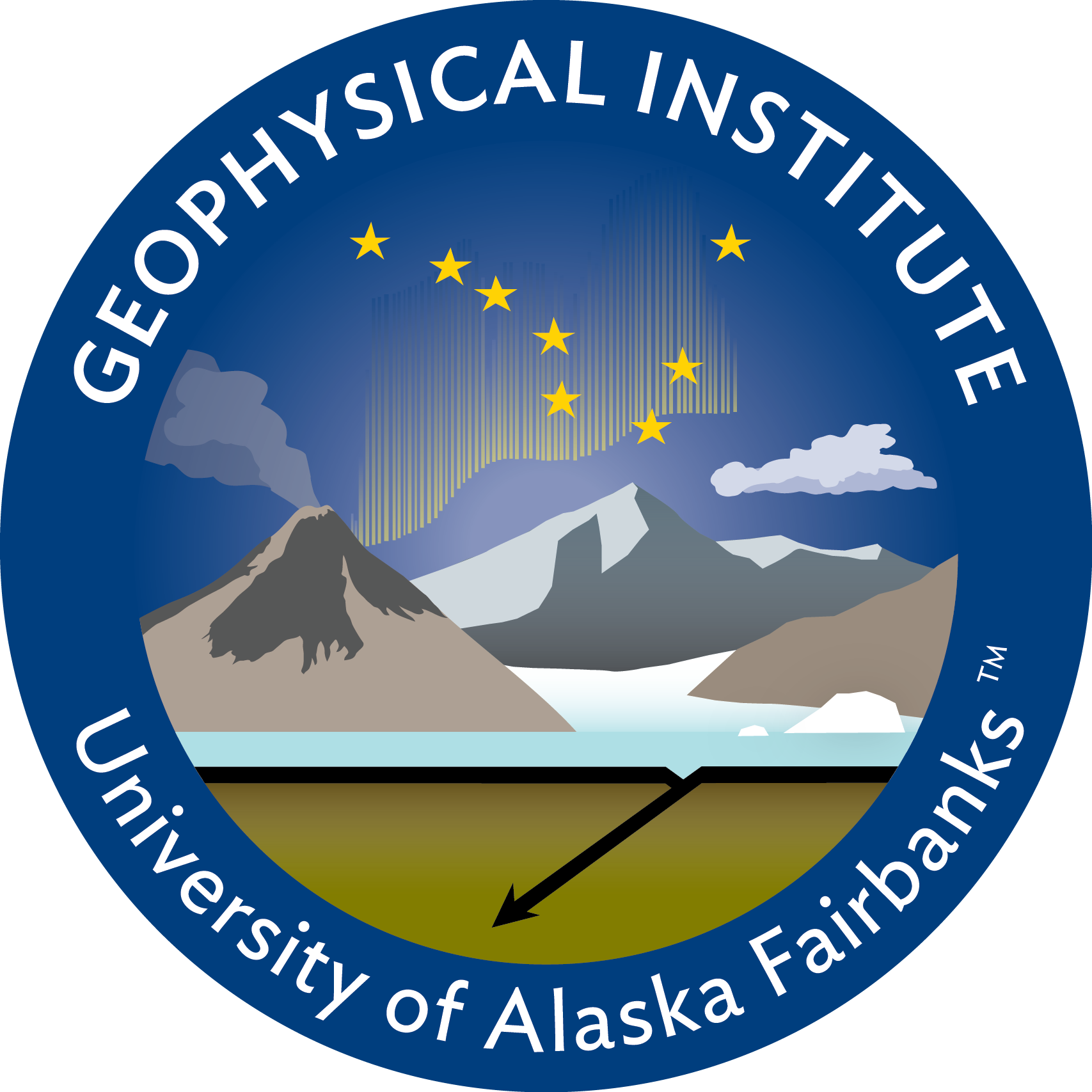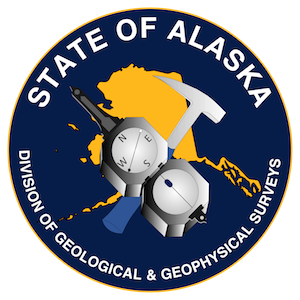| Red (Warning) | |
| Orange (Watch) | |
| Yellow (Advisory) | |
| Green (Normal) | |
| Uninstrumented |
Aleutians
(52.0765, -176.1109)2025-03-28 20:20:48 UTC
Activity at Great Sitkin Volcano continued over the past week, characterized by the slow eruption of lava in the summit crater. Satellite radar data through March 26 shows ongoing slow growth of the lava flow. Intermittent, small volcanic earthquakes continue to occur. Weakly elevated surface temperatures were observed in overnight satellite data consistent with slow lava effusion. Steaming from the summit was observed several days this week in web camera imagery.
Since the May 2021 explosion, there have been no other explosions at Great Sitkin Volcano. The lava eruption that began in July 2021 is ongoing. It has filled most of the summit crater and advanced into valleys below. The volcano is monitored using local seismic and infrasound sensors, satellite data and web cameras, and regional infrasound and lightning networks.
Cook Inlet-South Central
(61.2989, -152.2539)2025-03-28 20:20:48 UTC
Volcanic unrest continues at Mount Spurr volcano and is characterized by ongoing earthquake activity, surface deformation, and volcanic gas emissions. Seismicity remains elevated with about 68 located earthquakes last week. While this is lower than previous weeks, earthquake rates have gone up and down during this current period of unrest. An overflight last Friday measured gas emissions that were elevated but unchanged from previous measurements on March 7 and 11. Gas emissions from the summit were also detected several times in satellite data. Steaming from the summit was observed during clear weather throughout the week and was robust at times. Increased steam observations on Wednesday evening were not associated with any detectable change in seismicity or gas emissions and are attributed to favorable atmospheric conditions. AVO released an Information Statement on March 12 that provides a summary of the current unrest. The Mount Spurr monitoring network is functioning well, and a new web camera was recently installed.
AVO continues to closely monitor activity at Mount Spurr for signals indicating the volcano is moving closer to an eruption using local seismic, infrasound, and GNSS stations, web cameras, regional infrasound, lightning networks, and satellite data. Based on previous eruptions, additional changes in earthquakes, ground deformation, the summit lake, and fumaroles would be expected if magma moves closer to the surface. Therefore, if an eruption occurred, it would be preceded by additional signals that would allow advance warning.



